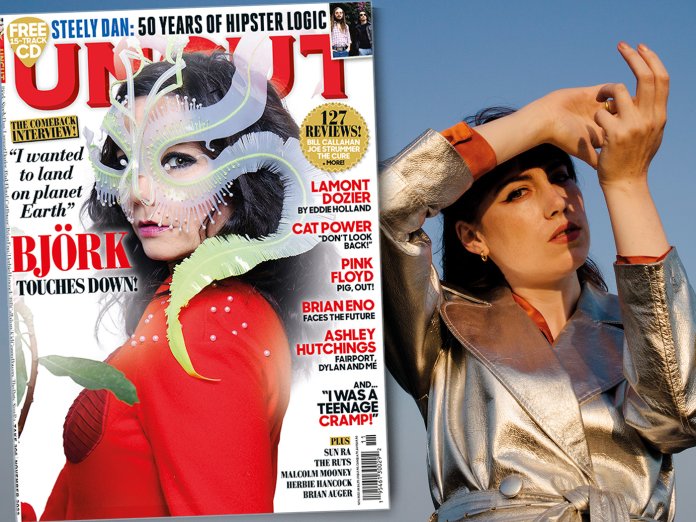Depressed and anxious following the release of her remarkable debut album Land Of No Junction in 2020, Dubliner Aoife Nessa Frances headed west to spend lockdown with her father and sisters in County Clare. Reinvigorated by the experience, she’s returned with a dark, dreamy and defiant second album, Protector. “Music is magic,” she tells Stephen Troussé as she leads Uncut through the landscape the record grew out of…in the latest issue of Uncut magazine – in UK shops from Thursday, Sept 15 and available to buy from our online store.
The writer and cartographer Tim Robinson described the Burren, the ancient, karst moonscape of northwest County Clare, as one of the Earth’s great wonders: “One hundred and fifty square miles of paradoxes… [an] austere beauty, the result of millennia of abuse”.
He was thinking of elemental abuse – centuries of acid rain, carving deep grykes in the glacial limestone pavement. He took a dim view of more recent, human actions, describing the quarries carved across his beloved Connemara as “festering sores”.
What would he have made of the eerie Clare edgelands, where we picnic one glorious July afternoon with the singer, songwriter and surrealist Aoife Nessa Frances? Aoife’s led us here, to one of the places where she found peace, was able to recalibrate and refocus, during the long lockdown of 2020. She knows the paths and steps surely over electric fences, through dense thickets, past the pack of proudly feral, hugely horned goats that roam the rocks.
We stumble along behind, emerge into a clearing and suddenly encounter our destination: a 200-foot deep abandoned quarry, gouged out of the limestone in a sublime and possibly illegal act of ecological vandalism. Pooled at the bottom, water of unfathomable, brilliant blue.
The owners are long gone and the quiet, forsaken landscape is strewn with fallen pylons that once carried power lines. A red fox darts through the long grass. A hawk glides by lazily, coasting on a thermal.
On a deceptively warm afternoon, as we chat, munch Hula Hoops and get slowly sunburnt, the quarry below us could be some isolated Cairngorms gorge or an occult earthwork. It feels like a picture postcard distillation of that beloved lockdown meme: nature is healing.
Aoife is quick to affirm that Protector is very much not a “pastoral nature record”. “Location and setting are important to the record,” she explains. “But there’s a tension there – between the busy-ness of Dublin and the peace of Clare, but also between wanting to float away and wanting to assert yourself. That tension is crucial to the record.”
But if you were to look for an objective correlative, a living, vivid embodiment of the uncanny depths, wild airs and healing drift of Protector, Aoife’s defiant second album, you could do worse than starting with the strange, unnatural beauty of this quarry.
For more than 200 years, artists have headed to the west of Ireland in search of poetry, folklore and magic. Aoife came here almost by accident.
PICK UP THE NEW ISSUE OF UNCUT TO READ THE FULL STORY



